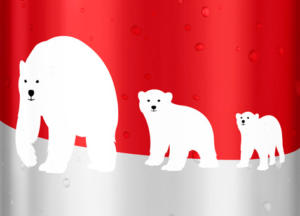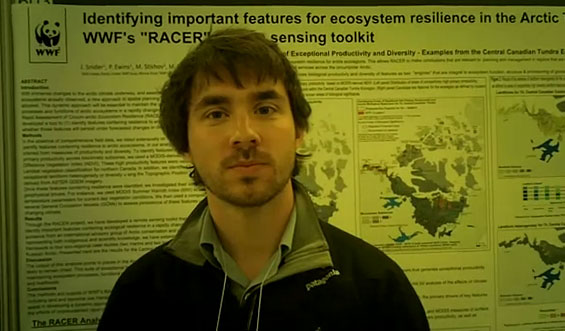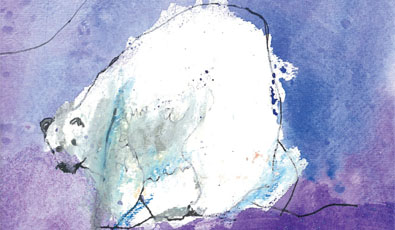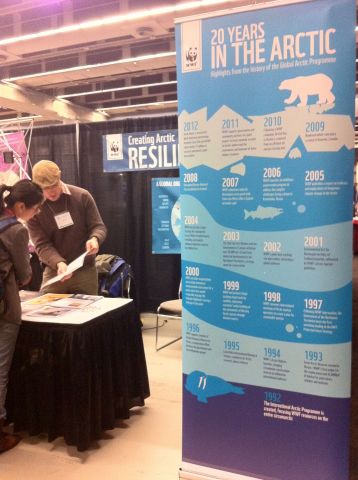
The International Polar Year conference (IPY) is not just about polar science, but also innovative approaches to conservation. Yesterday, WWF staff had an opportunity to speak about the wildly successful Arctic Home campaign.
This partnership between WWF and Coke turned the company’s familiar polar bear marketing campaign into a boon for the bears. Polar bears adorned every Coke can in North America during fall and winter 2012, encouraging the public to make a donation that would be matched dollar-for-dollar. A spokesman for Coca-Cola Canada called Arctic Home the most successful campaign they’ve ever done.
Watch WWF-Canada’s Julia Dutkay discuss the success of Arctic Home:
Monthly Archives: April 2012

Presenting polar science at IPY2012

Martin Sommerkorn on RACER, WWF’s new tool to identify ecosystem resilience in the Arctic.
James Snider of WWF discusses his research on Arctic resilience:
Alexander Shestakov, director of the WWF Global Arctic Programme, speaks on the risks of Arctic shipping:

Looking back: The lessons of IPY
 The first modern International Polar Year (IPY) in 2007-2008 focused global attention on scientific research at both poles. Starting from the efforts of a small number of enthusiasts and agencies, and by building on existing multinational collaborations and science programs, IPY has developed into a world-wide, community-based effort.
The first modern International Polar Year (IPY) in 2007-2008 focused global attention on scientific research at both poles. Starting from the efforts of a small number of enthusiasts and agencies, and by building on existing multinational collaborations and science programs, IPY has developed into a world-wide, community-based effort.
This week, thousands of researchers, community members and governmental officials are meeting in Montreal to turn the knowledge we’ve gained since then into action.
Appropriately, the Polar Research Board (PRB) is taking a look back at the lessons and legacies of that pivotal first year with a new report:
Get the report:
Download “Lessons and Legacies of the International Polar Year“
Join a webinar on the report
May 2 at 1:00 PM EDT
A presentation and discussion with co-chairs Bob Bindschadler and Julie Brigham-Grette
Register here or contact Lauren Brown for more information.
The Polar Research Board is a unit of the National Academies dedicated to enhancing understanding of the Arctic, Antarctic, and high-latitude regions and providing guidance to Congress, federal agencies, and the nation on cold region issues.

Turning knowledge to action: International Polar Year
 As I write this I’m sitting in the WWF booth here at the International Polar Year Conference in Montreal, Canada.
As I write this I’m sitting in the WWF booth here at the International Polar Year Conference in Montreal, Canada.
It’s hard to actually get a break to write this in between the stream of people visiting the booth – with about 3,000 people registered, there’s always someone passing by. We’re using the booth to do what the conference is supposed to be about, moving knowledge into action – in our case the knowledge we’re pushing out comes from our offices around the Arctic. We have reports from Russia on using remote sensing to count walrus populations, field reports from Alaska, and a report we’re highlighting at this conference, the final version of the handbook on our work to create a framework for assessing resilience in the Arctic.
The people who come to the booth to pick up the materials range from some Argentinian students interested in our work in the Antarctic (we found them Spanish language materials thanks to our colleagues from the Antarctic and Southern Oceans Initiative) to an Inuit leader from Nunavik (Northern Quebec) who wanted to know how the money we raised jointly with Coca-Cola is benefiting northern conservation. But what really struck me was the number of teachers who stopped by our booth – “We love you guys,” they tell us “your materials are really useful in the classroom.”
While we appreciate the opportunity to help shape young minds, we’re here to try to shape not-so-young minds too. We’re keenly aware that the rate of change in the Arctic, change confirmed by research conducted under the International Polar Year, is such that we don’t have the luxury of waiting until the kids grow up to make the right decisions for the Arctic. That’s why we’re going beyond the booth, presenting in a variety of sessions over the course of the week to talk about the urgency of translating research into action on climate change, on promoting resilience, and on ensuring that we have adequate safeguards for an Arctic that requires careful stewardship.